Suruga Bay Quick guide
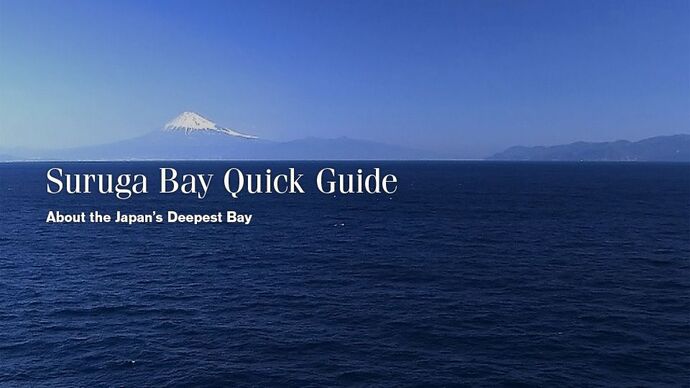
Shizuoka Prefecture's“Gateway to the Ocean”, Located in the Center of the Japanese Archipelago
Suruga Bay is located in Shizuoka Prefecture at almost the center of the Japanese archipelago. It is situated directly to the south of UNESCO World Cultural Heritage Site Mount Fuji.
The bay's total surface area is approximately 2,300 square kilometers. The north-to-south distance of about sixty kilometers, while the mouth of the bay, spanning from Omaezaki in the west to Irozaki at the tip of the Izu Peninsula in the east, measures roughly fifty-six kilometers.
Notably, Suruga Bay reaches a maximum depth of 2,500 meters, distinguishing it as the deepest bay in Japan.
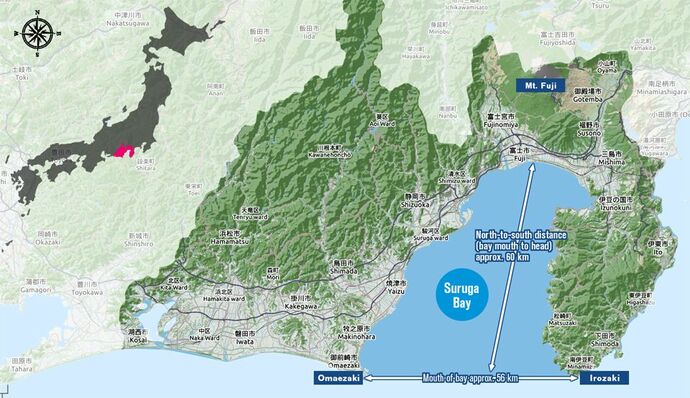
Japan's Deepest Bay, 2,500 Meters Deep, Formed 600,000 Years Ago
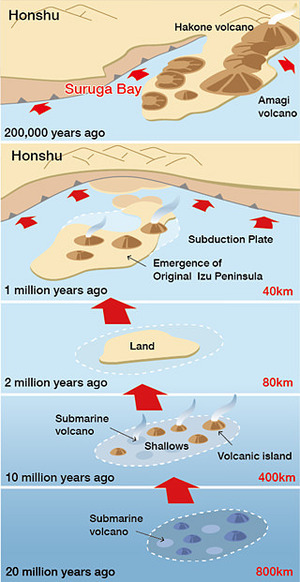
Suruga Bay's origins can be traced back to six hundred thousand years ago. A chain of underwater volcanoes, the predecessor of the present-day Izu Peninsula, were carried by tectonic movement from the southern Pacific Ocean hundreds of kilometers north into Japan, causing a collision that led to the bay's formation.
This movement was caused by the Philippine Sea Plate. As a result of this background, the bay is also the location of the dividing line between the Philippine Sea Plate and the Eurasian Plate. This divider, known as the Suruga Trough, accounts for Suruga Bay's extraordinary depth of 2,500 meters.
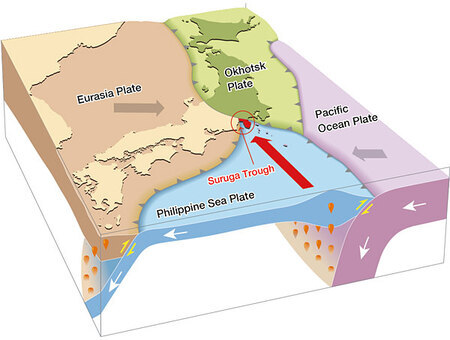
Difference in Elevation with Mount Fuji: 6,000 Meters Dynamic Seabed Topography
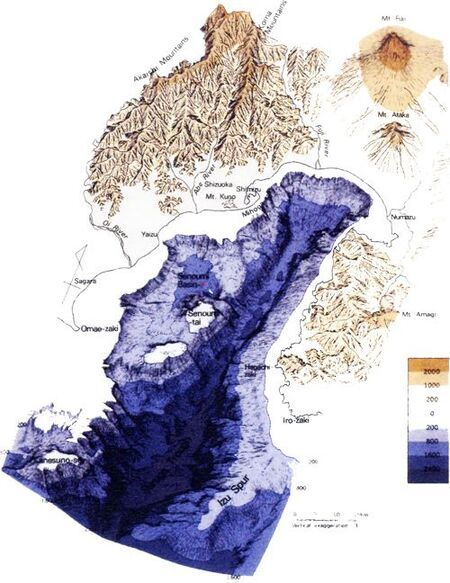
“An Atlas of the Sea Floor around Japan”
(1979 ,University of Tokyo Press)
Were one to completely drain Suruga Bay of water, it would provide a glimpse into the dynamic topography of the seabed. The floor of Suruga Bay is characterized by its extremely sharp slopes, plunging five hundred meters below sea level a mere two kilometers from the coast.
The interior part of the bay features a submarine canyon of one thousand meters in depth, which runs through the mouth of the bay all the way to the Mariana Trench.
These sharp inclines lie in dramatic contrast with nearby Mount Fuji, which towers 3,776 meters above sea level. The total height difference between the deepest part of the bay, which is 2,500 meters in depth, and the peak of the mountain amounts to an impressive six thousand meters, giving Shizuoka Prefecture a unique juxtaposition of high and low.
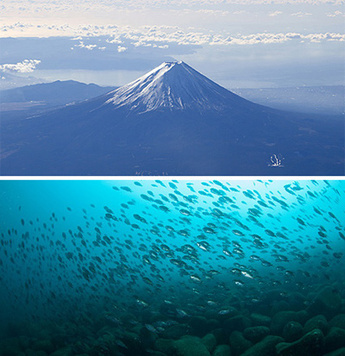
Three Deep Ocean Waters: the Kuroshio Current, the Subarctic Zone, and the Pacific Ocean
This jagged landscape forms part of the basis for Suruga Bay's life- giving attributes.
As a result of these conditions, the parts of the bay close to the shore feature three types of deep ocean water: those from the Kuroshio Current, the Subarctic Zone, and the Pacific Ocean.
The deep ocean waters are essentially devoid of sunlight, making photosynthesis impossible even for phytoplankton, and stay completely separate from the water from shallower areas.
As a result, these waters exhibit an isothermal cold temperature while also remaining highly pure and rich in nutrients.
In addition to providing sustenance to a broad range of marine organisms, these properties also give the water potential for use in commercial products. Currently, Shizuoka Prefecture is working to harness the waters of the Kuroshio Current in particular for food, pharmaceuticals, and other fields.
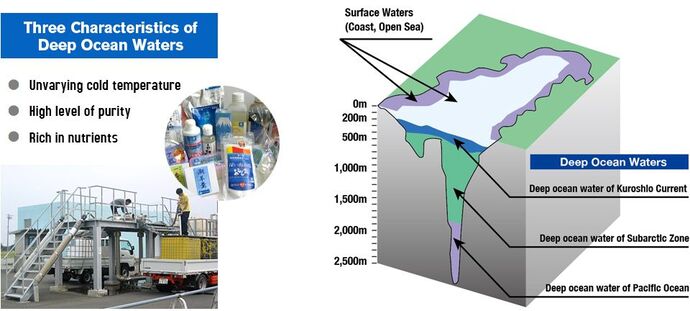
Mount Fuji and Suruga Bay, Linked by Spring Waters
Though Mount Fuji and Suruga Bay are set apart by their contrasting altitudes, they are linked by a common network of springs, as shown in this diagram. Precipitation on Mount Fuji, which totals approximately 2.5 billion tons annually, seeps into the earth and becomes groundwater, then reemerges from springs at the surface.
Owing to this process, the coast of Suruga Bay is home to numerous famous springs. These waters provide nourishment to their rich natural surroundings as they flow into the bay, where they provide an optimal environment for sakura-ebi shrimp and other forms of life.
Scientists have also confirmed the presence of springs on the bottom of Suruga Bay and are currently working to learn more about them.
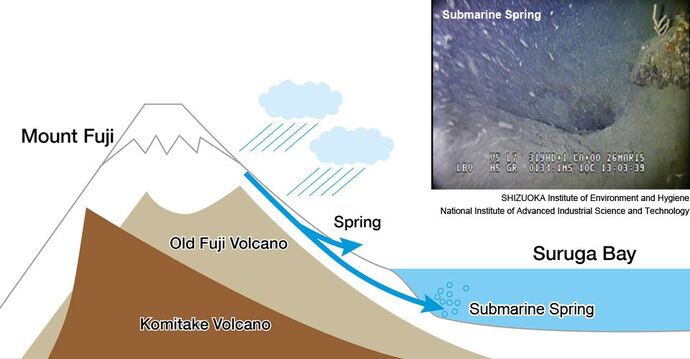
このページに関するお問い合わせ
交通基盤部港湾局港湾企画課
〒420-8601 静岡市葵区追手町9-6
電話番号:054-221-2614
ファクス番号:054-221-2389
kouwan_kikaku@pref.shizuoka.lg.jp
